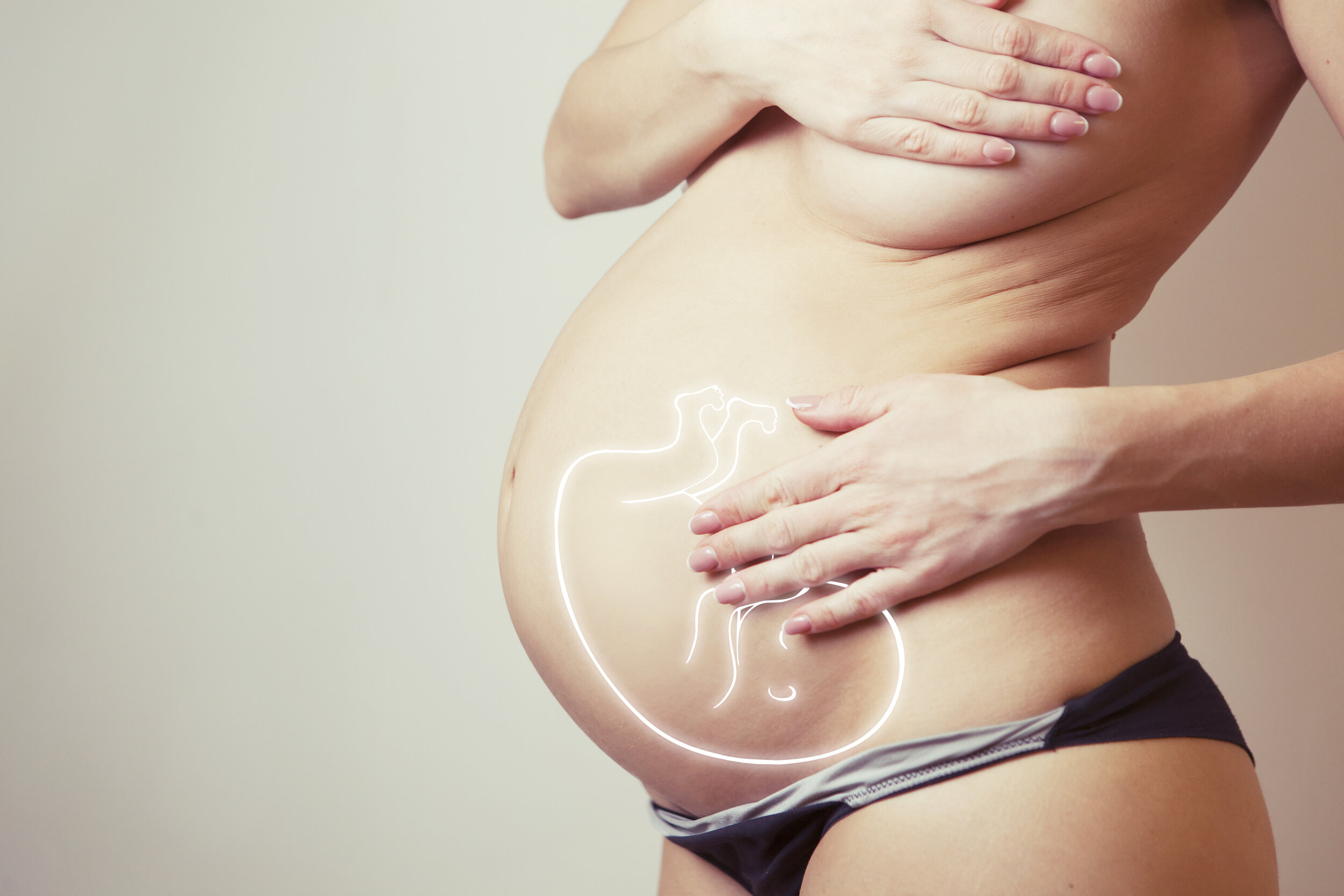6 Ways to Induce Labor Naturally
Updated: May 17, 2021
Have you reached the point where you're tired of being pregnant, but you're not quite ready for a medical induction (although it's tempting AF)?
The last weeks of pregnancy are the longest, short period of time in your life so far. I know, I've been there because my babies came at 39+6, 40+3 and 41 weeks, respectively. If you're ready to give your body & baby a gentle nudge and induce labor naturally, this is for YOU.
6 Ways to
Induce Labor NATURALLY
How to induce labor naturally.
There is a lot of information out there about medical inductions. The Health and safety of mom and baby are always the top priority. Sometimes a medical induction is needed, and that's okay, but adding ways to induce labor naturally should be in everyone's toolkit (not sure what else to put in your birth toolkit? Check out my freebie library.)
Here are six approaches to try:
1. Sex
And not just sex. Sex with semen inside of you, and ideally, where you orgasm.
Why?
Because semen contains natural prostaglandins, and prostaglandins are the active 'ingredient' in the medical induction drug, Cervidil. It's believed that 3x the natural form of prostaglandins (found in semen) has a comparable effect on ripening your cervix (effacement during labor) as Cervidil.
Also, orgasms (& the love hormone oxytocin) are great for encouraging the uterus to contract.
Side note: if your water has broken, do not have sex to speed up labor due to the risk of infection.
2. Nipple Stimulation
Unfortunately, nipple stimulation when trying to induce labor is not as fun as it sounds (especially if you have sensitive nipples with pregnancy).
The idea is to recreate the feeling of a baby nursing on your breast, which signals your body to release oxytocin. Remember that oxytocin encourages your uterus to contract. After birth, this is to help the uterus return to its original size, but during birth, oxytocin=contractions to get the baby out.
There is solid research that shows nipple stimulation can be an effective way to:
Induce labor naturally.
Avoid medical induction.
Reduce rates of postpartum hemorrhage.
Tip: Try putting on a breast pump for nipple stimulation. Bonus points if you're bouncing on the yoga ball at the same time.
3. Move Your Body
This is, of course, assuming that you have approval from your doctor for physical activity. But before you do, check-in with yourself. This isn't the time to run a marathon for the first time. Keep within your body limits. It will tell you what it can and can't do. Keep up with physical activity throughout your pregnancy, and it will help in the end.
You can try:
Walking
Bouncing on your birth ball (tip: when sizing for your birth ball, make sure that your hips are higher than your knees)
Squats
Stair lunges
Dancing
Try to match your activity level with the time of day and how you're feeling. If it's morning and you have energy, consider taking a brisk walk. If it's evening and you're tired, rest.
Be careful not to exhaust yourself. Don't overdo it.
4. Acupressure
Acupressure is often described as acupuncture without the needles. Instead, pressure is used on specific points of the body to open blocked energy paths called “meridians” in your body.
There are several acupressure points on your body that can help with labor induction. Here are a few examples.
large intestine point
spleen 6 point
center of palm
5. Acupuncture
Acupuncture involves the insertion of very thin needles through your skin at strategic points on your body. Needles aren't for everyone, but this method after the cervix begins to ripen can have encouraging effects. Seek out an acupuncturist in your area. Bonus if they offer moxibustion.
6. Aromatherapy
Aromatherapy works through the sense of smell and skin absorption using products such as these:
diffusers
aromatic spritzers
inhalers
bathing salts
body oils, creams, or lotions for massage or topical application
facial steamers
hot and cold compresses
clay masks
Time to break out your essential oils… diffuse, rub on your belly, or even put a few drops in a warm bath. Clary sage, lavender, jasmine, or peppermint oil are popular for use during labor. Keep in mind, if you develop any irritation to the eyes, throat and nose, headaches, or rash – that is a clear sign these aren't for you.
What else do you need to consider?
Having said all this, there are still a few more things to think about before you induce labor naturally:
Has your provider given you the 'go ahead' to try natural induction options?
Are you at term?
If your body and your baby aren't ready for birth, these suggestions might not do much for you. But if you're at the edge of labor, these may give your body that little extra push to get things started.
Before you go… I have a little something for you. If you want an easier labor… here are '12 Positions for an Easier Labor' to download!





